Selected Places of Interest in Hamburg
Speicherstadt
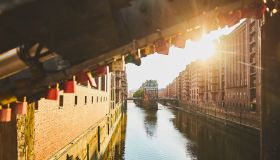
The century-old Speicherstadt is the world’s largest contiguous warehouse complex, built on oak piles due to its location between the canals of the former Free Port. The district is crossed by what are known as fleets - canals that are flooded depending on the tides and can also be travelled by ship. One can travel the narrow canals in small barges to admire the architectural details of the red brick facades. Since 1883 it’s traded with spices, tea and carpets there. Since 2015, the Speicherstadt and the Kontorhausviertel are Hamburg’s first UNESCO-World Heritage Site. Family and adventure museums, chic restaurants and advertising agencies can be found there.
Elbphilharmonie Hamburg
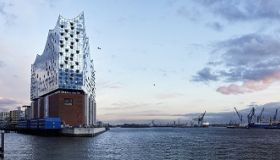
The Elbphilharmonie Hamburg presents Hamburg newest cultural and urban landmark. From the opening on January 11th 2017, the Concert hall will offer a spectacular venue of classical music culture, music of the 21st century and sophisticated light music. It was designed by the Swiss architects Herzog & de Meuron. In the future, world famous musicians will perform there and the concerts will offer a multi-faceted, modern and cosmopolitan program, which shows the way to the future for the audience with its content to the music city of Hamburg. Besides an impressive concert hall, the building will also include a hotel, restaurants and apartments - the public plaza in the middle of the building will be open to the public.
Am Kaiserkai (HafenCity)
Stairway quarter in Blankenese
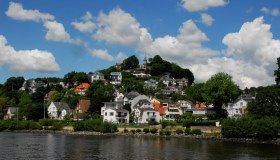
Narrow lanes, magnificent houses and many steps – that’s how one can experience the stairway quarter of Blankenese. The former fishing village and pilotage is not only the home of wealthy Hamburg, but also a popular destination. With perfect views over the Elbe, several restaurants and cafes it’s Germany’s most beautiful hiking trail. From April to September a scheduled ferry runs regularly from the St. Pauli Landungsbrücken to Blankenese.
Dockland
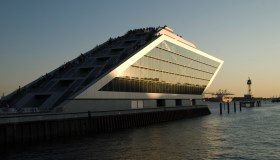
The Dockland is an office building at the banks of the Elbe behind the Hamburger fish market. The building from 2005 was designed by the Hamburg architect Hadi Teherani. The distinctive cross-section in the shape of a parallelogram rises like a ship’s bow out of the water. The elevators run diagonally up and down. The 500m² large roof terrace can be climbed by foot and is open for public visitors. It offers an impressive view of the river, the port facilities and the southern Elbe which flows in at this point.
Van-der-Smissen-Straße 9 (Altona-Altstadt)
Alter Elbtunnel
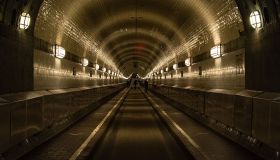
The old Elbe tunnel with a length of 426.5 meters connects the Landungsbrücken with the Elbe Island Steinwerder. Built in 1911, it is still used daily by pedestrians and cars - which get 24 meters down there by four large lift cages. The opening of the tunnel was therefore a technical sensation. Today, it is a nostalgic and lovingly tended piece of Hamburg history. Since 2003 the maritime Elbe tunnel is a protected monument and it was also honored as an „Historical landmark of Civil Engineering in Germany”. The walk through the narrow tubes will be rewarded by the magnificent panorama of the city from the southern bank of the Elbe.
Bei den St. Pauli-Landungsbrücken (St. Pauli)
St Michaelis Church

St Michaelis, the Lutheran main church in the southern part of the Neustadt, is affectionately known by locals as ‘Michel’ for short. The church was built between 1647 and 1669 by Peter Marquardt and Christoph Corbinus. It burnt down twice and has been rebuilt twice since then. Today St Michaelis Church impresses with its bright Baroque nave with a total of five organs. The observation deck of the church tower stands at a height of 106 metres and offers a panoramic view of the port and the city.
Englische Planke 1 (Neustadt)
Town Hall

Built between 1886 and 1897, Hamburg’s town hall dominates the city centre with its impressive architecture and its 112 metre-high tower. This magnificent sandstone Neo-Renaissance building is the seat of the Hamburg Senate and the Hamburg State Parliament. It has 647 rooms and its façade displays the statues of twenty kings and emperors of the old German Empire. The representative halls and back rooms can be viewed only on guided tours. Also worth seeing is the fountain of Hamburg’s patron goddess Harmonia in the town hall’s courtyard.
Rathausmarkt 1, (St. Georg)
Chilehaus

The Chilehaus is one of the finest examples of “Brick Expressionism” – an architectural style popular in Hamburg in the 1920s, which is characterised by the use of clay tiles and hard-baked bricks. Built by architect Fritz Höger, the Chilehaus constitutes the very centre of Hamburg’s Kontorhaus district. The name of the building is derived from the nitrate trade between Hamburg and Chile. Built between 1922 and 1924, it was one of the first of Hamburg’s high-rise buildings. The Kontorhaus district and the Speicherstadt district have been nominated as a UNESCO World Heritage Site 2015.
Fischertwiete 2 (St. Georg)
Tanzende Türme
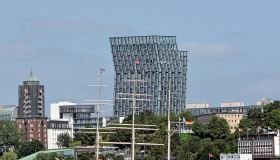
The Tanzende Türme, which are also known as the Tango Towers, are two skyscrapers at the very beginning of the Reeperbahn. The building complex was built in 2012, and was designed by Hamburg architect Hadi Teherani. The Reeperbahn’s new landmark is intended to represent a couple dancing tango. Behind the curved façade structure of glass and steel there are not only offices but also the sky restaurant Clouds. Another highlight to be encountered here are the two mechanical winged entrance doors in the ground that lead to the subterranean Mojo Club.
Reeperbahn 1 (Neustadt)
Jungfernstieg
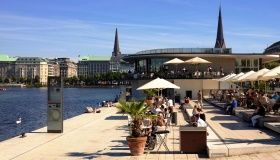
The Jungfernstieg, Hamburg's most famous boulevard, is located right in the centre of Hamburg on the southern shore of the Inner Alster. In the old days, families would take their Sunday walks here, parading their unmarried daughters (or Jungfern). Today the Jungfernstieg is a popular destination for locals and tourists for shopping and strolling. The public stairs just opposite the magnificent Alsterhaus department store are the perfect place to relax beside the Inner Alster Lake. From here, the Alster ferries set off to the Outer Alster Lake.
Bunker Feldstrasse

The bunker on Feldstrasse was built during the Second World War and served as an air raid shelter. Built between 1942 and 1944, the bunker gave shelter to more than 18,000 people during bombing raids. It has been used as a media and music centre since 1990. Today, the building is home to e.g. the radio station Byte.fm, the clubs Terrace Hill and Uebel & Gefährlich, as well as numerous agencies, artists and musicians. The Ensemble Resonanz chamber orchestra also has a rehearsal room here.
Feldstrasse 66 (Neustadt)
Rondeelteich
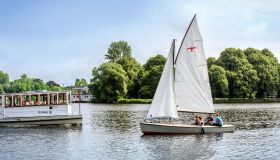
Some of Hamburg’s finest and most luxurious villas are located around the Rondeelteich, a small pond leading off the Alster in the district of Winterhude. This is where some of the city’s most affluent people reside, and many of these are descendants of Hanseatic merchant families whose wealth stems from Hamburg’s trading history. The beautiful villas can only be viewed from the water. You can peek into the magnificent front gardens from your pedal boat or an Alster ferry.